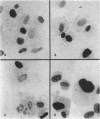Abstract
Homozygous xeroderma pigmentosum fibroblasts cannot repair damage to DNA bases, but can repair damage that involves chain breaks. In xeroderma pigmentosum, therefore, there is a defect in an early step in repair at which base damage is recognized and the polynucleotide chain broken enzymatically (by an endonuclease). Heterozygous fibroblasts repair base damage to normal extents. Carcinogenesis in xeroderma pigmentosum, and perhaps in some normal individuals, may be the result of somatic mutations caused by unrepaired damage.
Full text
PDF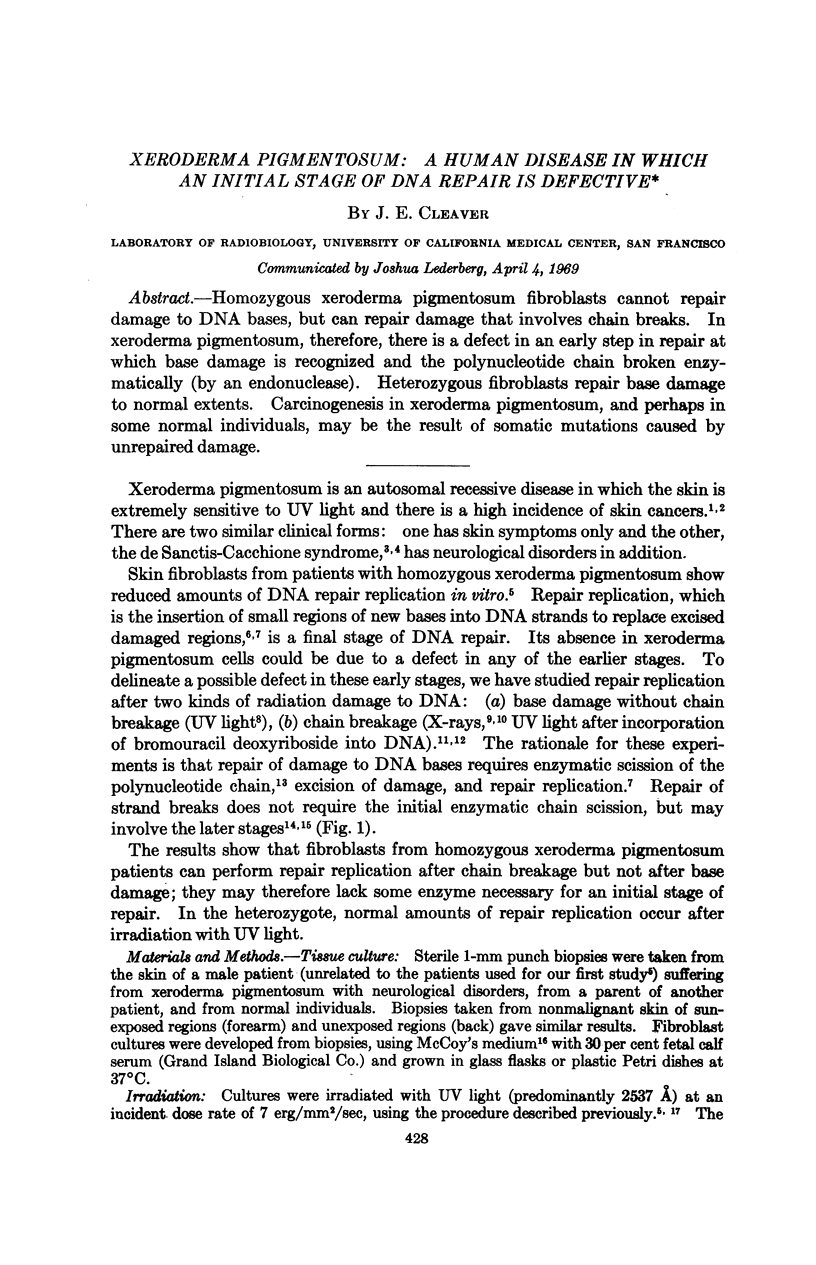

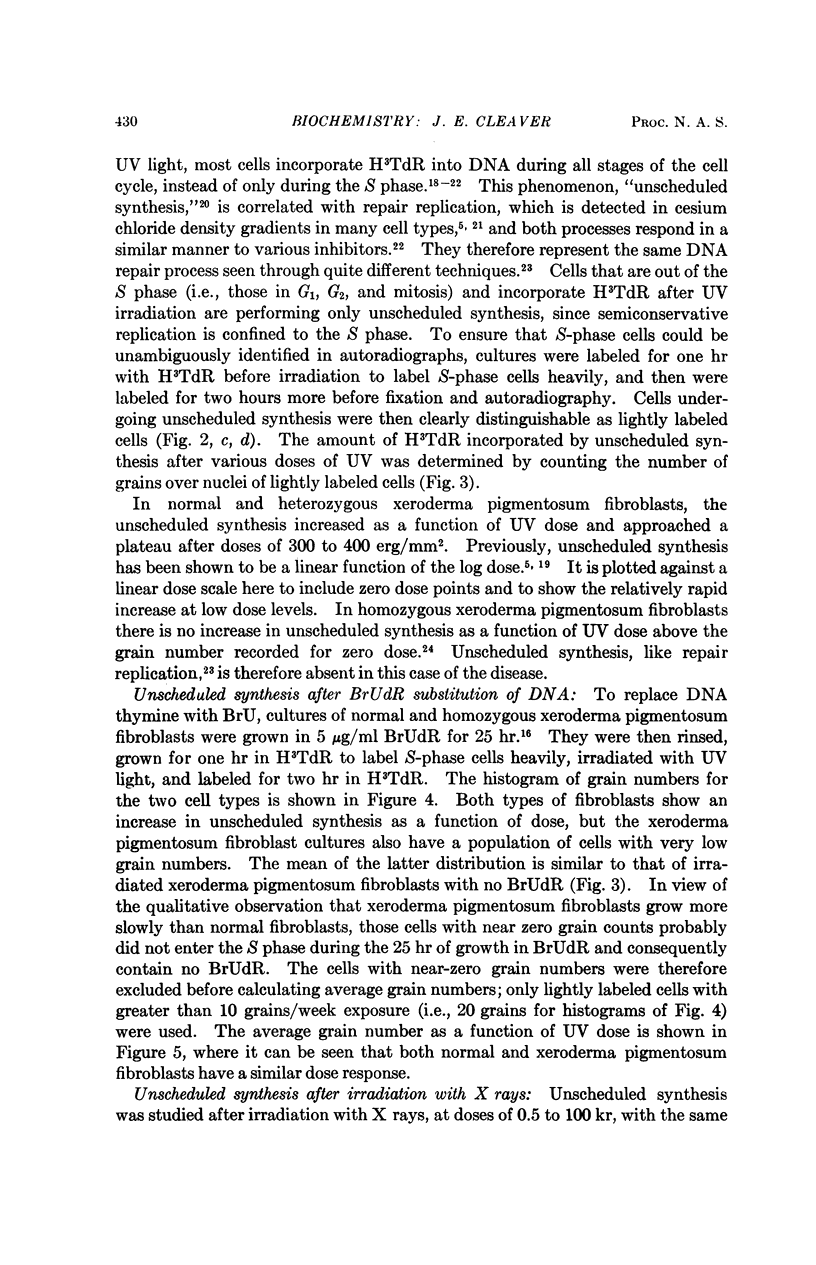
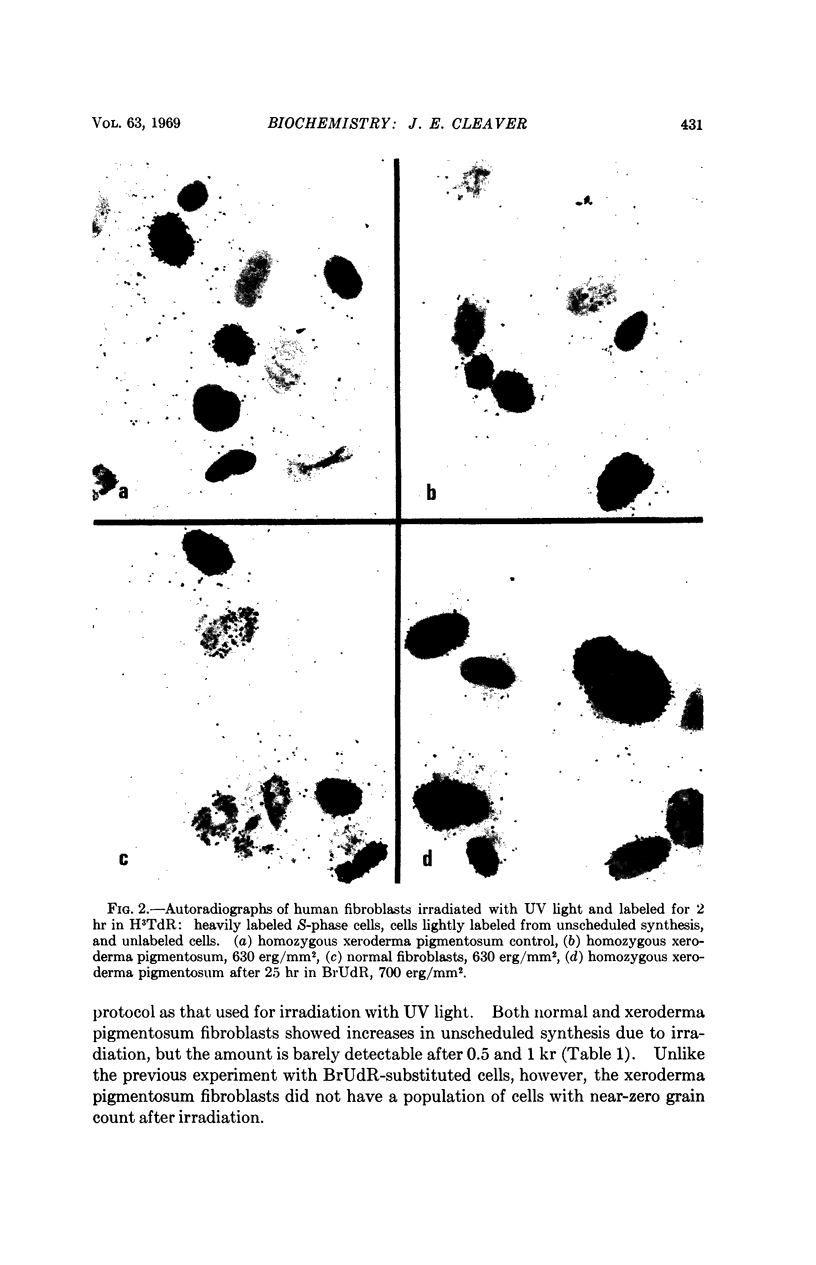
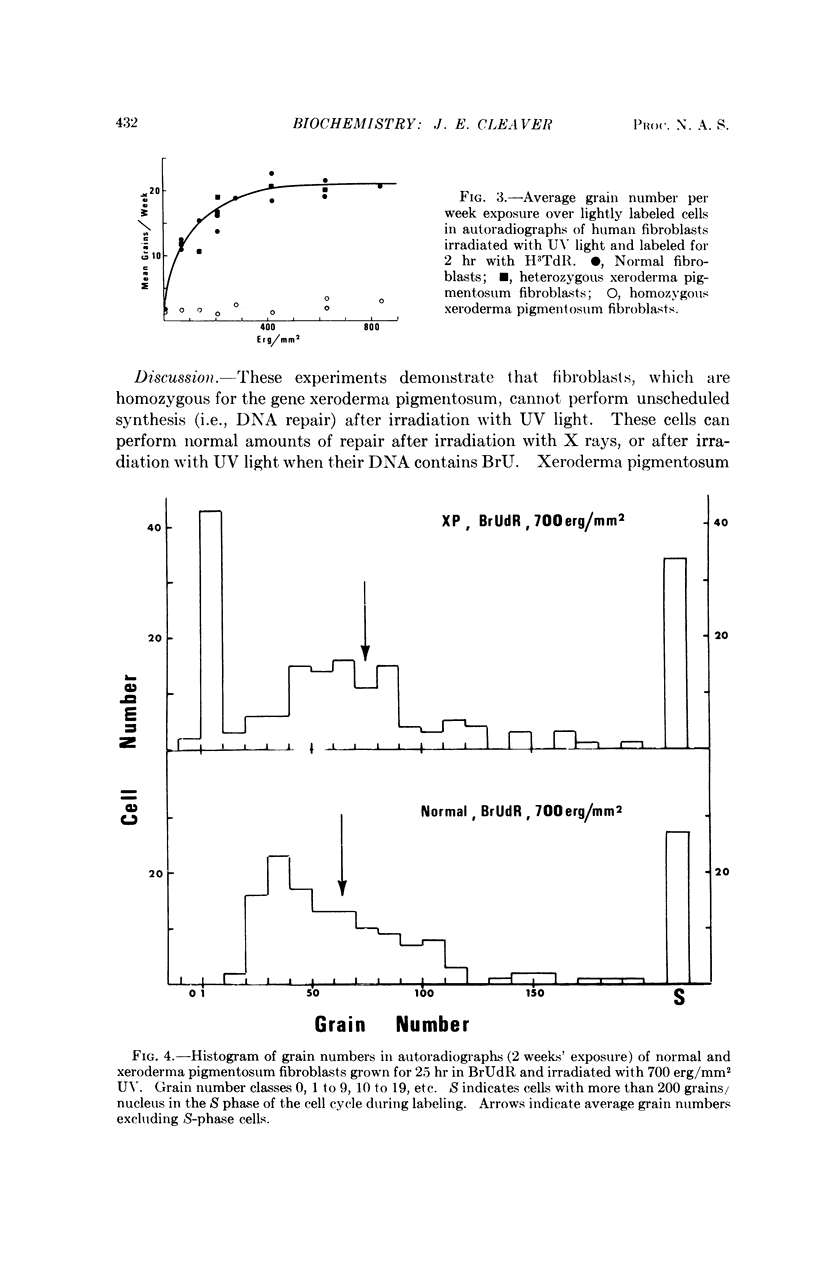
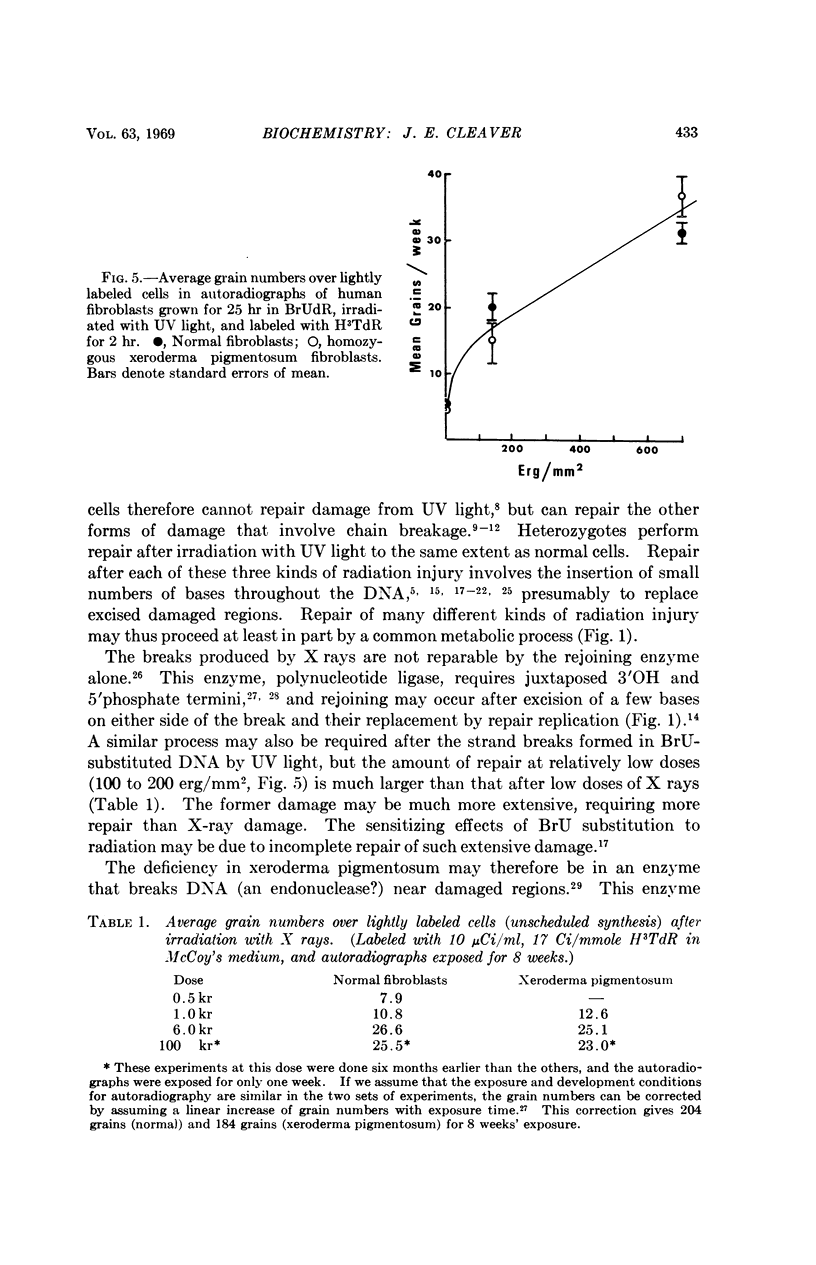
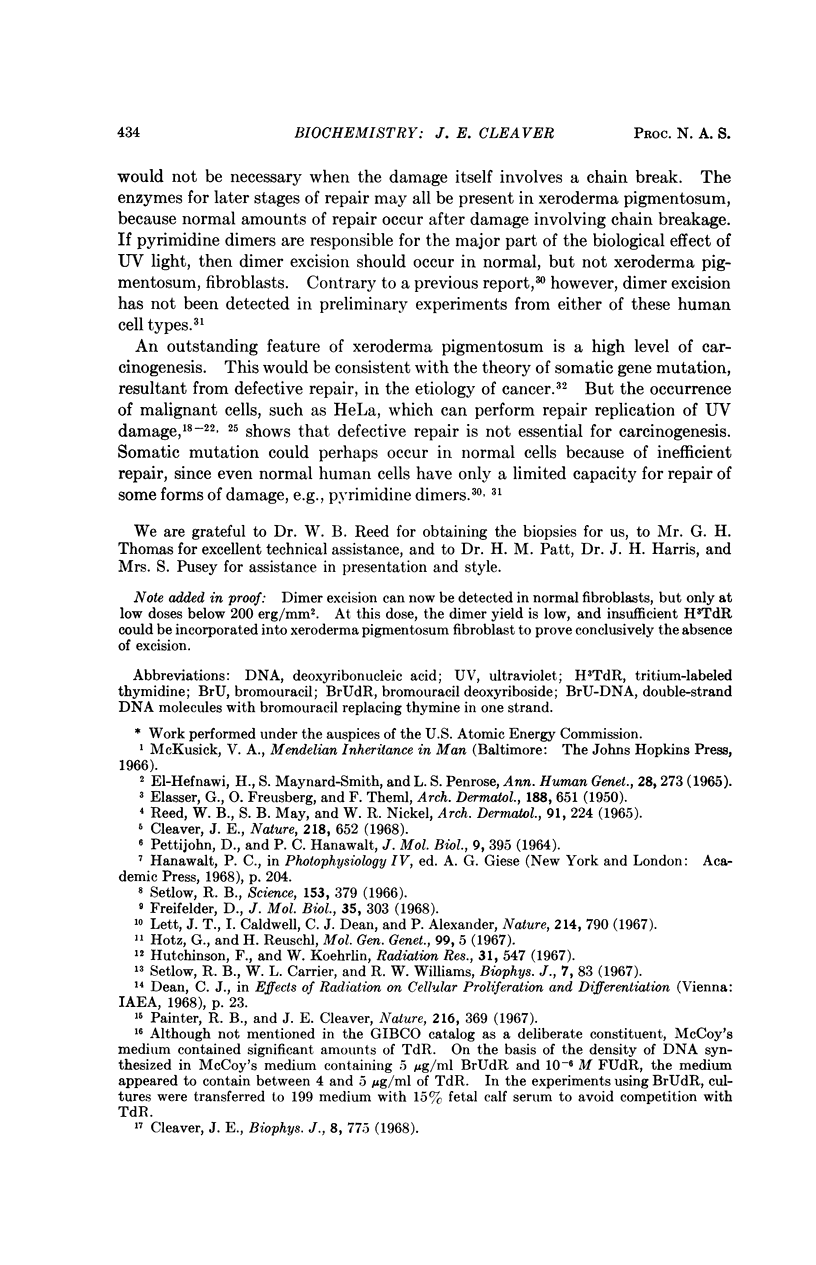

Images in this article
Selected References
These references are in PubMed. This may not be the complete list of references from this article.
- Cleaver J. E. Defective repair replication of DNA in xeroderma pigmentosum. Nature. 1968 May 18;218(5142):652–656. doi: 10.1038/218652a0. [DOI] [PubMed] [Google Scholar]
- Cleaver J. E. Repair replication and degradation of bromouracil-substituted DNA in mammalian cells after irradiation with ultraviolet light. Biophys J. 1968 Jul;8(7):775–791. doi: 10.1016/S0006-3495(68)86520-8. [DOI] [PMC free article] [PubMed] [Google Scholar]
- Cleaver J. E. Repair replication of mammalian cell DNA: effects of compounds that inhibit DNA synthesis or dark repair. Radiat Res. 1969 Feb;37(2):334–348. [PubMed] [Google Scholar]
- Cleaver J. R., Painter R. B. Evidence for repair replication of HeLa cell DNA damaged by ultraviolet light. Biochim Biophys Acta. 1968 Jul 23;161(2):552–554. doi: 10.1016/0005-2787(68)90131-7. [DOI] [PubMed] [Google Scholar]
- Djordjevic B., Tolmach L. J. Responses of synchronous populations of HeLa cells to ultraviolet irradiation at selected stages of the generation cycle. Radiat Res. 1967 Oct;32(2):327–346. [PubMed] [Google Scholar]
- EL-HEFNAWI H., SMITH S. M., PENROSE L. S. XERODERMA PIGMENTOSUM--ITS INHERITANCE AND RELATIONSHIP TO THE ABO BLOOD-GROUP SYSTEM. Ann Hum Genet. 1965 Mar;28:273–290. doi: 10.1111/j.1469-1809.1964.tb00483.x. [DOI] [PubMed] [Google Scholar]
- Lett J. T., Caldwell I., Dean C. J., Alexander P. Rejoining of x-ray induced breaks in the DNA of leukaemia cells. Nature. 1967 May 20;214(5090):790–792. doi: 10.1038/214790a0. [DOI] [PubMed] [Google Scholar]
- Olivera B. M., Lehman I. R. Linkage of polynucleotides through phosphodiester bonds by an enzyme from Escherichia coli. Proc Natl Acad Sci U S A. 1967 May;57(5):1426–1433. doi: 10.1073/pnas.57.5.1426. [DOI] [PMC free article] [PubMed] [Google Scholar]
- PETTIJOHN D., HANAWALT P. EVIDENCE FOR REPAIR-REPLICATION OF ULTRAVIOLET DAMAGED DNA IN BACTERIA. J Mol Biol. 1964 Aug;9:395–410. doi: 10.1016/s0022-2836(64)80216-3. [DOI] [PubMed] [Google Scholar]
- Painter R. B., Cleaver J. E. Repair replication in HeLa cells after large doses of x-irradiation. Nature. 1967 Oct 28;216(5113):369–370. doi: 10.1038/216369a0. [DOI] [PubMed] [Google Scholar]
- Painter R. B., Cleaver J. E. Repair replication, unscheduled DNA synthesis, and the repair of mammalian DNA. Radiat Res. 1969 Mar;37(3):451–466. [PubMed] [Google Scholar]
- RASMUSSEN R. E., PAINTER R. B. EVIDENCE FOR REPAIR OF ULTRA-VIOLET DAMAGED DEOXYRIBONUCLEIC ACID IN CULTURED MAMMALIAN CELLS. Nature. 1964 Sep 26;203:1360–1362. doi: 10.1038/2031360a0. [DOI] [PubMed] [Google Scholar]
- REED W. B., MARY S. B., NICKEL W. R. XERODERMA PIGMENTOSUM WITH NEUROLOGICAL COMPLICATIONS: THE DE SANCTIS-CACCHIONE SYNDROME. Arch Dermatol. 1965 Mar;91:224–226. doi: 10.1001/archderm.1965.01600090032005. [DOI] [PubMed] [Google Scholar]
- Rasmussen R. E., Painter R. B. Radiation-stimulated DNA synthesis in cultured mammalian cells. J Cell Biol. 1966 Apr;29(1):11–19. doi: 10.1083/jcb.29.1.11. [DOI] [PMC free article] [PubMed] [Google Scholar]
- Regan J. D., Trosko J. E., Carrier W. L. Evidence for excision of ultraviolet-induced pyrimidine dimers from the DNA of human cells in vitro. Biophys J. 1968 Mar;8(3):319–325. doi: 10.1016/S0006-3495(68)86490-2. [DOI] [PMC free article] [PubMed] [Google Scholar]
- Setlow R. B. Cyclobutane-type pyrimidine dimers in polynucleotides. Science. 1966 Jul 22;153(3734):379–386. doi: 10.1126/science.153.3734.379. [DOI] [PubMed] [Google Scholar]
- Shimada K., Nakayama H., Okubo S., Sekiguchi M., Takagi Y. An endonucleolytic activity specific for ultraviolet-irradiated DNA in wild type and mutant strains of Micrococcus lysodeikticus. Biochem Biophys Res Commun. 1967 Jun 9;27(5):539–545. doi: 10.1016/s0006-291x(67)80021-4. [DOI] [PubMed] [Google Scholar]
- Szilard L. ON THE NATURE OF THE AGING PROCESS. Proc Natl Acad Sci U S A. 1959 Jan;45(1):30–45. doi: 10.1073/pnas.45.1.30. [DOI] [PMC free article] [PubMed] [Google Scholar]
- Weiss B., Richardson C. C. Enzymatic breakage and joining of deoxyribonucleic acid, I. Repair of single-strand breaks in DNA by an enzyme system from Escherichia coli infected with T4 bacteriophage. Proc Natl Acad Sci U S A. 1967 Apr;57(4):1021–1028. doi: 10.1073/pnas.57.4.1021. [DOI] [PMC free article] [PubMed] [Google Scholar]



